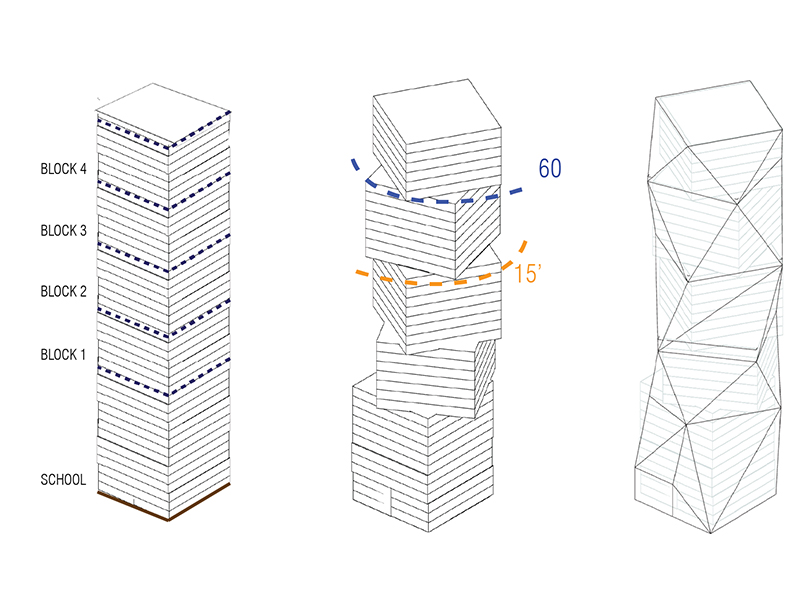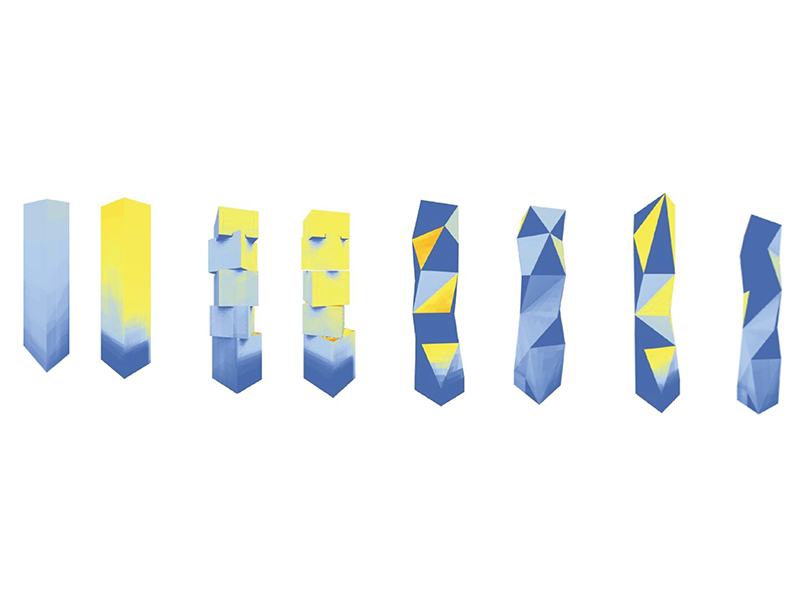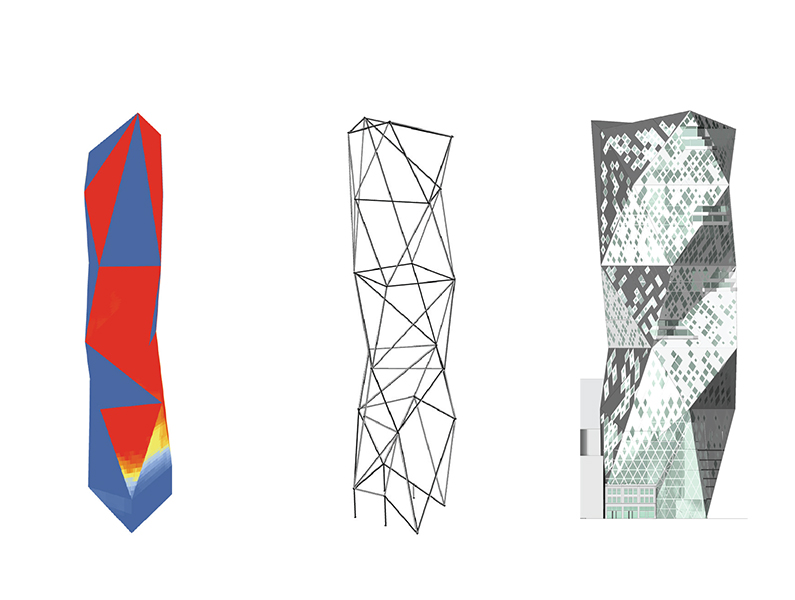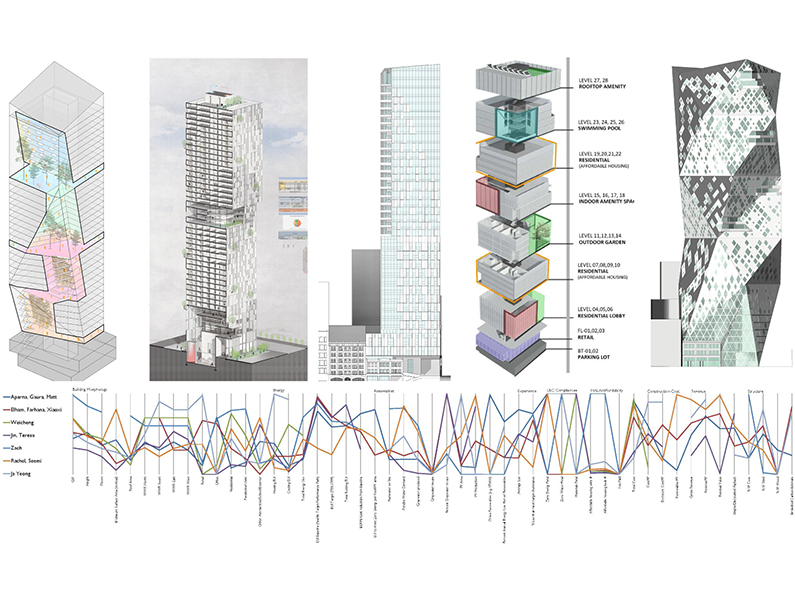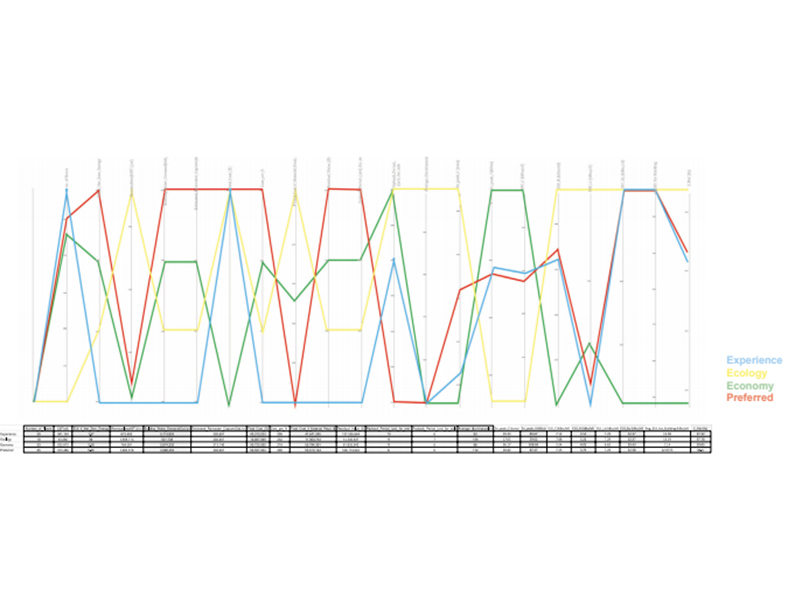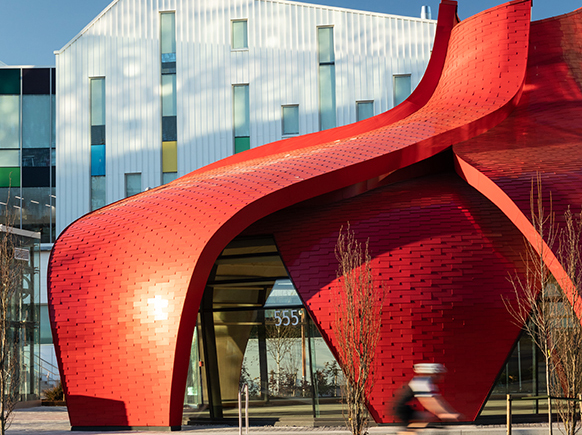Can we shape buildings to optimize experiential, environmental, and economic performance?
Seemi Hasan and Rachel Meyers, one of several student teams in a graduate design studio at the University of Washington, researched how rotating and faceting tower’s shape could mitigate solar heat gain and increase the energy generated by solar panels integrated into the building’s façade, while also considering views and aesthetics.
In collaboration with the University of Washington Department of Architecture, Martin Selig Real Estate, and WSP, Perkins&Will created a high-performance building studio for the 2018 Winter Quarter. Students in the course were tasked with evaluating design decisions in the context of their experiential, environmental and economic impacts through compliance with Seattle’s Living Building Pilot Program (LBPP). The LBPP appeals to developers by incentivizing specific sustainable design thresholds with additional height and density. Though it is still in its pilot phase, the LBPP is gaining recognition and was a natural fit for graduate students about to enter the workforce, helping advance Seattle’s sustainable built environment and design profession. The studio applied the LBPP to a planned high-rise project in Seattle’s Belltown neighborhood using performance data to shape the building.
Applying a Performance-Based Design Process
Students approached this design problem with a focus on building performance, and oscillated between computer simulation and building form to balance variables such as solar heat gain, daylighting, views, heating and cooling loads, natural ventilation, and human experience both inside and outside the building. Students Seemi and Rachel used computer simulation to measure solar irradiation (the amount of solar radiation falling on various surfaces, shown in blue, yellow, and red in the diagrams below), researching numerous design options for optimizing the faceted shape of the building to maximize daylighting and energy performance. Design Space Construction (DSC), a process and tool developed by Perkins&Will’s Process Lab, allowed Rachel and Seemi to generate a space of possible designs and monitor the relative impact on these and additional performance-based metrics throughout the evolution of their design.
Influencing Architecture Pedagogy
The UW Department of Architecture is leveraging this design studio as part of its own pilot for advancing the curriculum for its Masters of Architecture program. In particular, the department is shifting its requirements for students’ final year to provide them with a culminating experience that allows them to apply the insights gained from a seminar course to the discoveries that arise in a research-focused design studio. The Perkins&Will research-based design studios in 2017 and 2018 were structured similarly. First, students took a seminar course where they researched topics ranging from energy performance targets and innovative water technologies, to code requirements for complying with Seattle’s Living Building Pilot Program. Feedback from the instructors and students to the UW Architecture Department’s curriculum committee helped shape the curriculum change that will be officially implemented in the 2019 academic school year.
Building a Research-Informed Practice
This graduate design studio is also a testing ground for Perkins&Will’s research informed practice. Partnering with the UW Department of Architecture and Center for Integrated Design provided a unique opportunity to share cutting-edge tools developed within the firm’s Research Labs, while receiving feedback helped enhance the tools’ functionality and usability.
With steady advances in computing power and design tools, it is easier than ever to use simulation during early phases of design to inform the trajectory of a project. The DSC tool is built in a visual scripting language called Grasshopper, a plug-in for the 3D modeling software program Rhino 3D. The close relationship between the modeling program and the DSC tool is integral to reducing the common barriers for simulation. Simulation results from the DSC tool are visualized in a parallel coordinate plot (PCP), an overlay of line graphs as shown in the image below.
This method of visualization provides teams with a comparison of normalized variables side-by-side and an opportunity to weigh the merits of each design option in the early phases of a project using measurable data. The DSC tool allows teams to test how performance variables such as heating and cooling loads, daylighting, water use, and first and lifecycle costs correlate to development decisions including height, window area, and floor area. Having this data-driven feedback displayed visually in a comparative graph increases the likelihood that performance metrics will inform the design of the project.
Immersing in Practice-Informed Research
Student groups put this theory to the test during the ten-week studio. Above is a PCP comparing the performance metrics of the student projects with renderings showing the wide variety of designs that resulted from the research. A PCP can also be effective to show various design options within a single project. For example, the PCP below illustrates how Xiaoxi Jiao, Elham Soltani, and Farhana Haque compared four different schemes, with the red line representing what would become the preferred scheme. Rather than orienting the building to minimize solar exposure, this group explored increasing solar gain to drive natural ventilation throughout the building by using a large atrium to create a stack effect. The team worked with the instructors to augment the Design Space Construction tool with an additional simulation to measure the effects of natural ventilation. The customized version of the tool allowed the group to explore how changes to the atrium at different times of year would influence daylighting and peak heating and cooling loads in the offices and apartments adjacent to the atrium.
Throughout the quarter, student groups explored a wide variety of design options with the aim of striking a balance between performance and beauty. While the various groups had different objectives and approaches, a unifying goal was focusing on an iterative process and developing a narrative. The Design Space Construction tool allowed students to make sure their design changes were working towards their performance goals, and to create a narrative based on their findings. The partnership between Perkins&Will and the University of Washington, co-pilots for Seattle’s LBPP and the architecture program curriculum, is creating its own narrative, helping students shape the sustainable future of the architecture profession.

